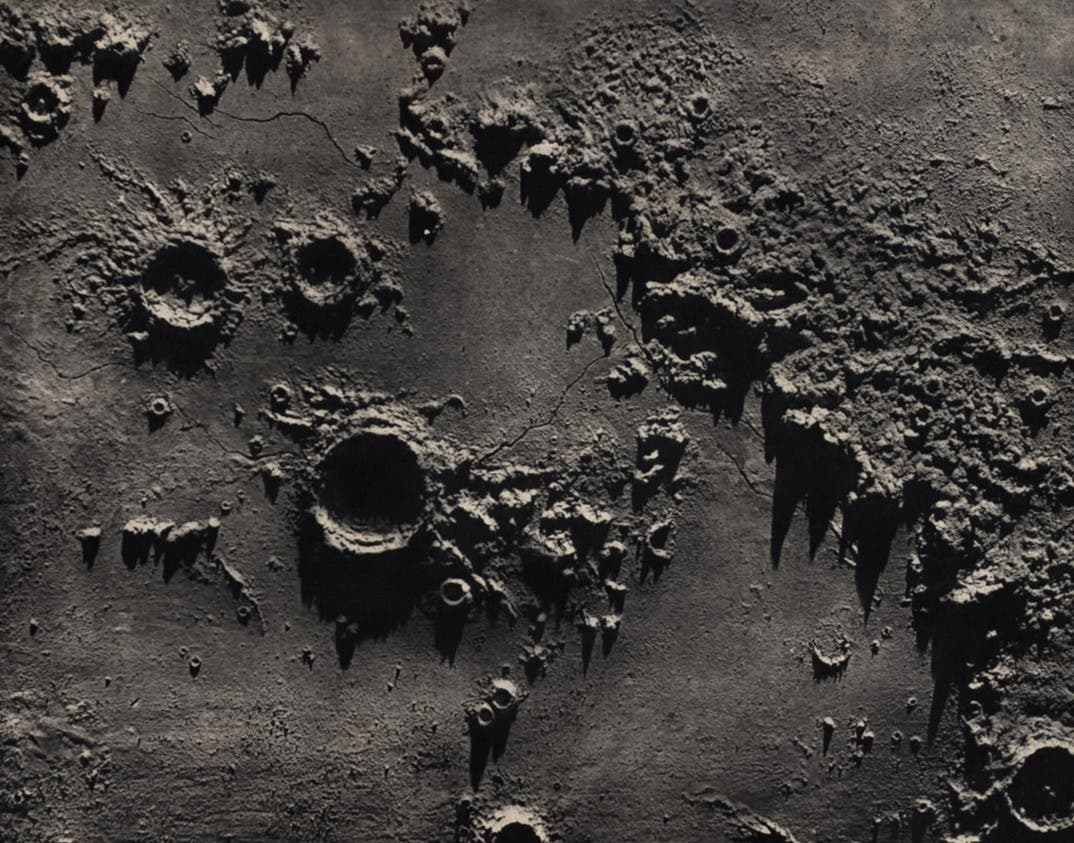De La Rue, Warren (1815-1889).
“On a photo-engraving of a lunar photograph,” in: Monthly Notices of the Royal Astronomical Society, vol. 25, p. 172 and plate. – London, 1865.
The first photograph of the moon was taken by J.W. Draper in New York in 1840, scarcely one year after Daguerre invented the medium. Within a decade many other astronomers, such as J.A. Whipple and G.P. Bond at Harvard, had recorded quite acceptable photographic lunar images. Still unsolved, however, was the problem of how to print such images for publication. It was De la Rue, an amateur British astronomer with an observatory at Cranford, who first conquered the technical difficulties.

